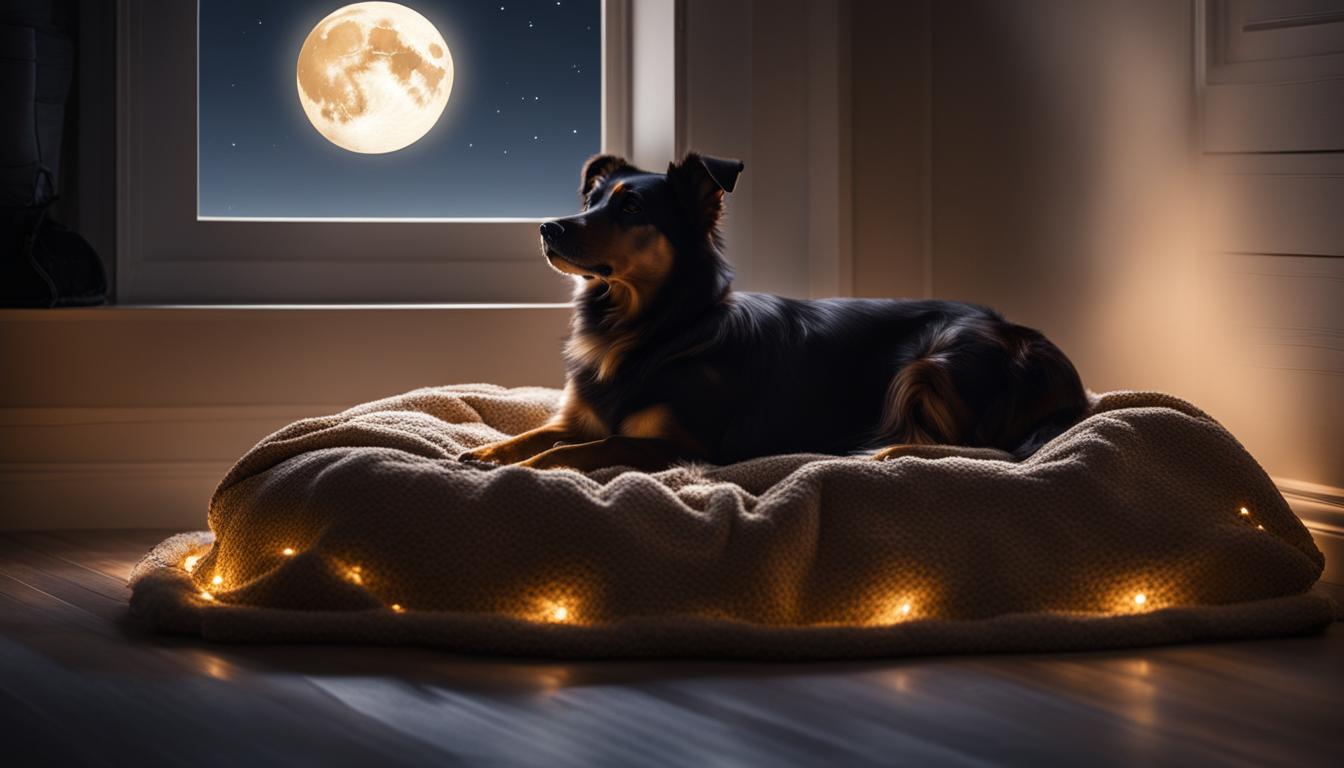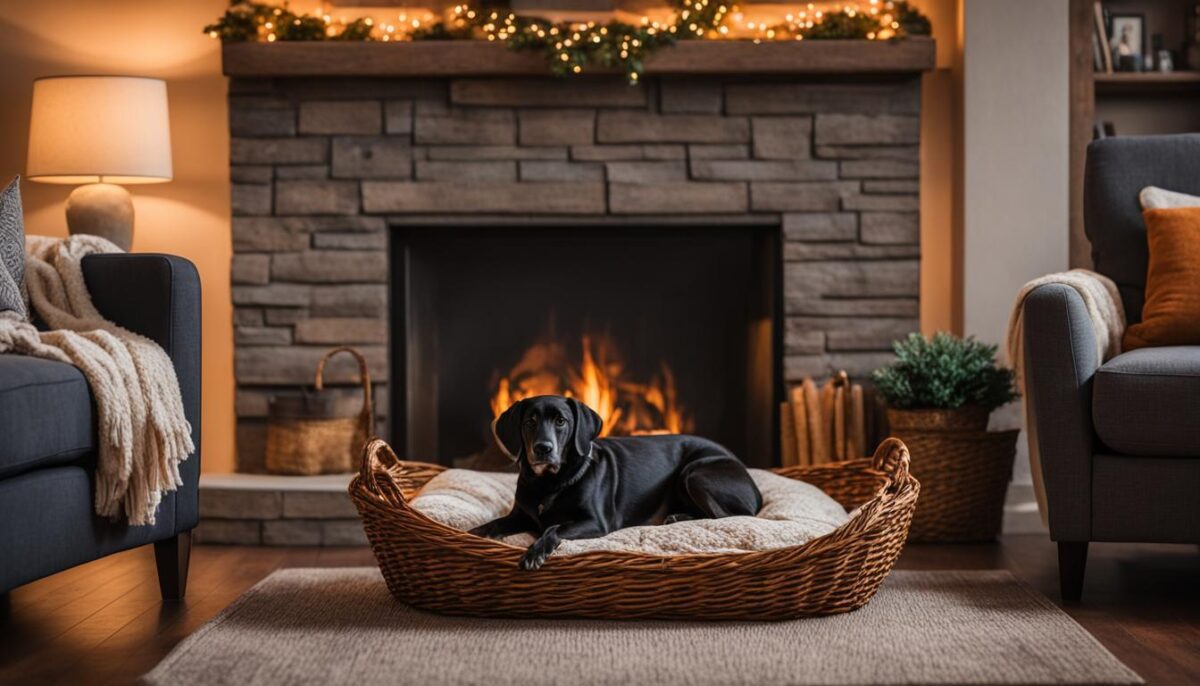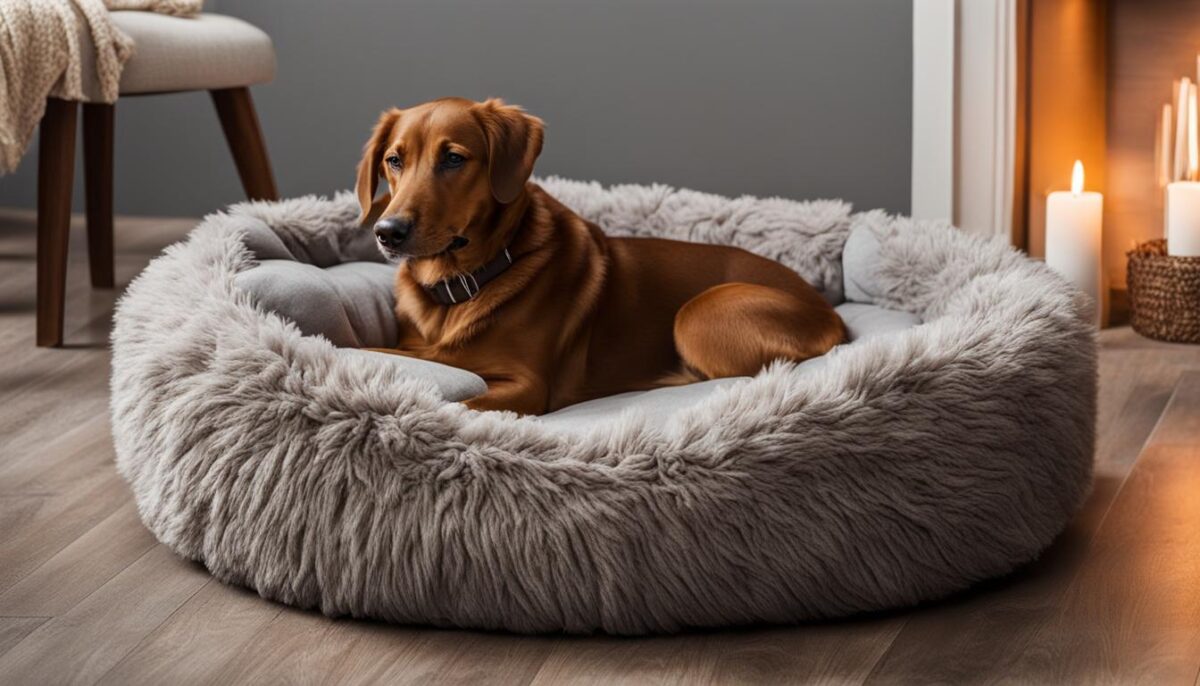When the sun sets and it gets dark, you might wonder if your furry friend starts to feel cold. Even though dogs have fur, they can still get chilly, especially during those cool nights. Just like us, pups can feel the cold and might need a little extra help to keep warm. This is true for tiny dogs or ones with not a lot of fur. To make sure your dog isn’t shivering at night, find them a warm spot to sleep, think about getting them a sweater, and make sure they eat well to stay toasty. Remember, how old your dog is, what kind they are, and their health all affect how well they can stand the cold. If you see your dog trying to curl up tight or shivering, that means they’re looking for a way to warm up.
Key Takeaways
- Even dogs with fur can feel the cold during chilly nights.
- Give your dog a warm place to sleep to keep them comfy.
- Small dogs and those with thin coats may need sweaters for extra warmth.
- Good food helps your dog keep their body heat.
- Watch for signs like shivering or curling up, as they mean your dog could be cold.
Understanding How Dogs Experience Cold
When the nights get cold, your pup might feel it too. Some dogs have built-in coats that make them happy in the snow, while others may shiver at the slightest breeze. Let’s find out what makes some dogs cozy and others chilly!
The Influence of Fur Quality
Dogs are like snowflakes: no two fur coats are the same! Some dogs, like Huskies, have thick and dense fur that lets them play in the snow all day long. Their fur is so good at keeping them warm, it’s like a superpower against the cold. But small dogs like Chihuahuas, with thinner fur, may need a little help staying toasty.
The fur coat density is a big deal when it comes to a dog’s thermal sensitivity.
Size Matters: Small Vs. Large Breeds
Size isn’t just about who can fetch the biggest stick; it’s about staying warm too! Small pups can lose heat super fast since they have more skin for their size compared to big dogs. It’s like when you take a small cup of hot cocoa outside in winter—it cools off way quicker than a big pot of soup.
Age and Health Impact on Cold Sensitivity
Young puppies and older dogs might need an extra blanket during those chilly evenings. If they’re not feeling well or have health issues, it’s even harder for them to keep warm. Just like us, when they’re not at their best, they need some extra care.
Did you know that every dog has their own way to show if they’re cold? Things like curling up tight or not wanting to play outside can mean your furry friend is trying to find pup cold comfort.
If you want to know more about how our canine pals handle the cold, check out this cool table:
| Breed | Fur Coat Density | Breed Cold Tolerance |
|---|---|---|
| Siberian Husky | Very Dense | High |
| Chihuahua | Sparse | Low |
| Golden Retriever | Dense | Moderate to High |
| Greyhound | Thin | Low |
| German Shepherd | Dense | High |
So next time you and your pup are headed out for a winter walk, remember to bundle up if they’re one of the breeds that love to snuggle up for warmth!
Can Dogs Get Cold at Night?
When the sun goes down and it’s bedtime, your indoor dogs might feel the nighttime cold too. Just like people, dogs can get chilly when it’s cold outside, even inside the house. Canine night chill is a real thing for our furry friends. Dogs have their own body heaters, but those with short hair or little fat might need extra help to stay warm during dogs’ overnight cold.
Have you ever seen a dog curl up really tight or start to shiver? These are signs they might be too cold and looking for some cozy warmth. No one likes to be cold, and neither do dogs. They like it nice and warm, around 38-39 degrees warm! Imagine a beach on a hot day, that’s the kind of warm dogs love the most.
Your pet is part of your family, and you want to take care of them when it’s chilly. Here’s how you can help take care of your pet with pet cold weather care:
- Give them a warm place to sleep, like a good bed.
- Keep their fur dry, because wet fur can make them very cold.
- If your house is cold, a doggy sweater can give them extra warmth.
Here’s a table to help you keep your furry buddy toasty when it’s cold, especially at night:
| How to Help | What It Does |
|---|---|
| A comfy dog bed | Keeps them off cold floors and gives them a warm spot to sleep. |
| Dog sweaters and coats | Adds a layer to keep their body heat from escaping. |
| Avoiding baths before bedtime | Helps them stay dry so they won’t feel the cold from wet fur. |
So, when the stars are out and it’s time to say goodnight, make sure your dog is happy and warm. Keep an eye on them for those chilly signs and cuddle them up in their special warm spot. That way, they can have sweet dreams and warm paws all through the night’s cold. Goodnight, and stay warm!
Creating a Safe and Warm Environment for Your Dog
When the night is cold, your doggy friend needs a cozy spot to snuggle. It’s all about keeping your pet happy and toasty! A pet-safe sleeping environment means your furball is less likely to catch a chill. Let’s look at how you can make their snooze zone super warm.
Choosing the Right Shelter
Think of a dog house as your pup’s own little castle. When it’s chilly, dog house insulation is like the castle walls keeping the cold knights away. It wraps up your dog’e home in a warmth blanket. Make sure the house is just the right size—not too big or too small—for your cuddly canine.
Bedding and Insulation
A warm bed is like a warm hug for your dog. You can use warm dog bedding like thick, soft blankets that make your furry friend say, “Woof, I love this!” Plus, there are special heating pads made just for dogs that keep the warmth coming all night long.
Appropriate Dog Clothing for Nighttime
Sometimes, your dog will need a little extra help staying warm. That’s where doggy sweaters come in! They are like cozy jackets that give your pet an extra layer of snug. They’re perfect for dogs that might shiver or shake when it’s cold.
Below is a helpful table detailing different types of insulation and where to use them:
| Insulation Type | Location | Benefits |
|---|---|---|
| Foam Board | Dog house walls | Keeps heat in, cold out |
| Heated Beds | Inside dog house/Indoors | Gentle, safe warmth |
| Sweaters and Jackets | On your dog | Extra layer for body heat |
Remember, keeping your buddy warm is all about using the right stuff and making sure they feel as snug as a bug in a rug. With these tips, your furry pal will be dreaming in cozy comfort all night long!
Recognizing Signs of Cold in Dogs
When your furry friend starts feeling the chill, they might not be able to say it, but they’ll surely show it. You’re the one who can help by watching for those tell-tale signs that they’re not warm enough. Imagine you feel cold and can’t find your blanket. That’s how your pup feels! So, keeping an eye out for cold behavior in dogs is a big part of caring for them when the temperature drops.
Physical Indicators of Discomfort
If your dog is too cold, they might shiver just like you do. Look at their body – are they hunched up as if they’re trying to stay cozy? Also, don’t forget to check their ears and paws; if they feel chilly, it’s time to take action. These are just some ways of identifying dog discomfort, and they mean your dog needs to be warmed up pronto.
Behavioral Changes During Colder Nights
Next, think about how your dog acts. When it gets cold, they might not be their usual playful self. You might see them looking for a sunny spot or not wanting to go outside at all. These are signs of observing canine cold signs, and they signal that you might need to help your pal find a warm spot or dress them in a cozy sweater. Always ensure they feel as happy and warm as possible when those temperatures take a dip.
FAQ
Do all dogs have the same cold sensitivity?
Dogs can indeed vary greatly when it comes to cold sensitivity. This comes down to factors like fur coat density and breed cold tolerance. Your **furry friend’s chilly nights** may be no trouble for a Husky, but a Greyhound may shiver.
What extra care can I provide to keep my pet warm at night?
To ensure your **pet’s warmth at night**, you might consider adding a sweater for their comfort, especially if they have a thin coat. Also, a balanced diet can help maintain their body heat and a warm, sheltered sleeping area is essential for your pet’s overnight cold protection.
How do fur quality and type affect a dog’s experience of the cold?
**Fur coat density** plays a crucial role in **thermal sensitivity in dogs**. Breeds with denser, thicker fur have higher breed cold tolerance and are more equipped to handle chilly conditions than breeds with thin or sparse fur.
Why are smaller dog breeds more prone to getting cold?
When it comes to **small vs. large breeds**, small dogs lose body heat quickly due to their larger surface area relative to their body mass. That’s why your small **pup’s cold** comfort may necessitate extra warmth like a cozy blanket or a heated bed.
Can an older dog’s age affect its ability to stay warm?
Absolutely, a dog’s **age and health** have a significant impact on cold sensitivity. As dogs age, or if they have certain health conditions, they might struggle with temperature regulation and require additional warmth.
Will my indoor dog need extra warmth during the night?
Yes, even **indoor dogs** need extra warmth, as **canine night chill** can still be an issue, especially for those with finer fur. It’s important to monitor your home’s temperature and provide a warm sleeping area.
What kind of shelter is best for my dog at night?
A suitable **dog house insulation** is key for outdoor shelters. Inside, an elevated bed away from drafts can provide comfort. The shelter should provide space but also be snug enough to retain heat.
What should I use for my dog’s bedding in colder weather?
**Warm dog bedding** is pivotal. Look for thick, insulating materials, and consider a dog-specific heating pad. Make sure whatever you choose is safe and comfortable for your dog to snuggle into at night.
Are doggy sweaters and clothing recommended for night time cold?
For certain dogs, **doggy sweaters** or jackets can provide much-needed insulation, acting as an extra layer that keeps the body heat in, which is especially helpful for night time cold protection.
How do I know if my dog is too cold?
Keep an eye out for physical signs such as shivering, hunched posture, or cold ears and paws. Behavioral changes may also occur, such as reduced activity or reluctance to go outside in cold weather.
What behavior changes might indicate my dog is cold?
You may notice your dog is seeking out warm places, sunbathing whenever possible, or being less active than usual. Such **behavior changes during colder nights** can indicate your dog is trying to stay warm.


